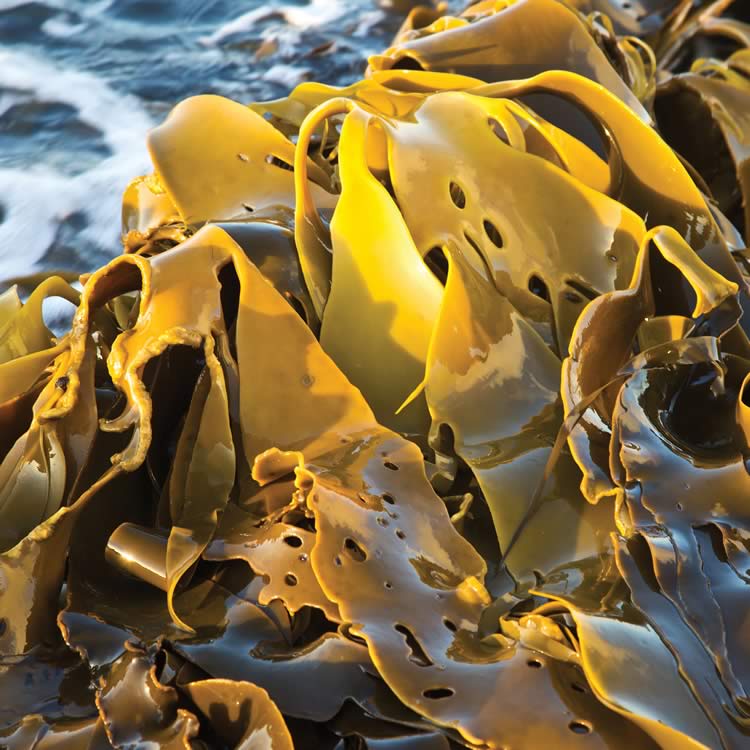Giant kelp

Community type
Habitat type
Rocky reefs, kelp beds and inter-tidal zone
A range of kelp species grow in south eastern Tasmania, and their location within a reef is influenced by depth. Bull kelp (Durvillaea potatorum) grows at the low tide mark, followed by cray weed (Phyllospora comosa) in slightly deeper water, giving way to common kelp (Ecklonia radiata) and then giant kelp (Macrocystis pyrifera) in deeper waters.
Giant kelp is the longest growing marine plant, and also one of the fastest growing organisms, with fronds growing up to 500 mm per day. Air filled vesicles provide buoyancy to the long rope-like fronds, and a cup shaped holdfast anchor them to the rocky reef. Just like forests on the land, beneath the surface giant kelp can form magnificent forests which provide habitat and food for marine fish and invertebrates, including rock lobster, abalone and trumpeter, and the commercially-harvested sea urchin Heliocidaris erythrogramma. The size and number of kelp forests in Tasmania has declined rapidly in recent decades, to perhaps only 5% of their original area, so it is threatened with local extinction.
Historically in the Derwent Estuary it occurred up as far as Rosny Point. Currently several areas in the lower Derwent around Blackmans Bay contain giant kelp. Giant kelp may be further at risk from the extension of the East Australian Current further south, bringing warmer influxes of water.
